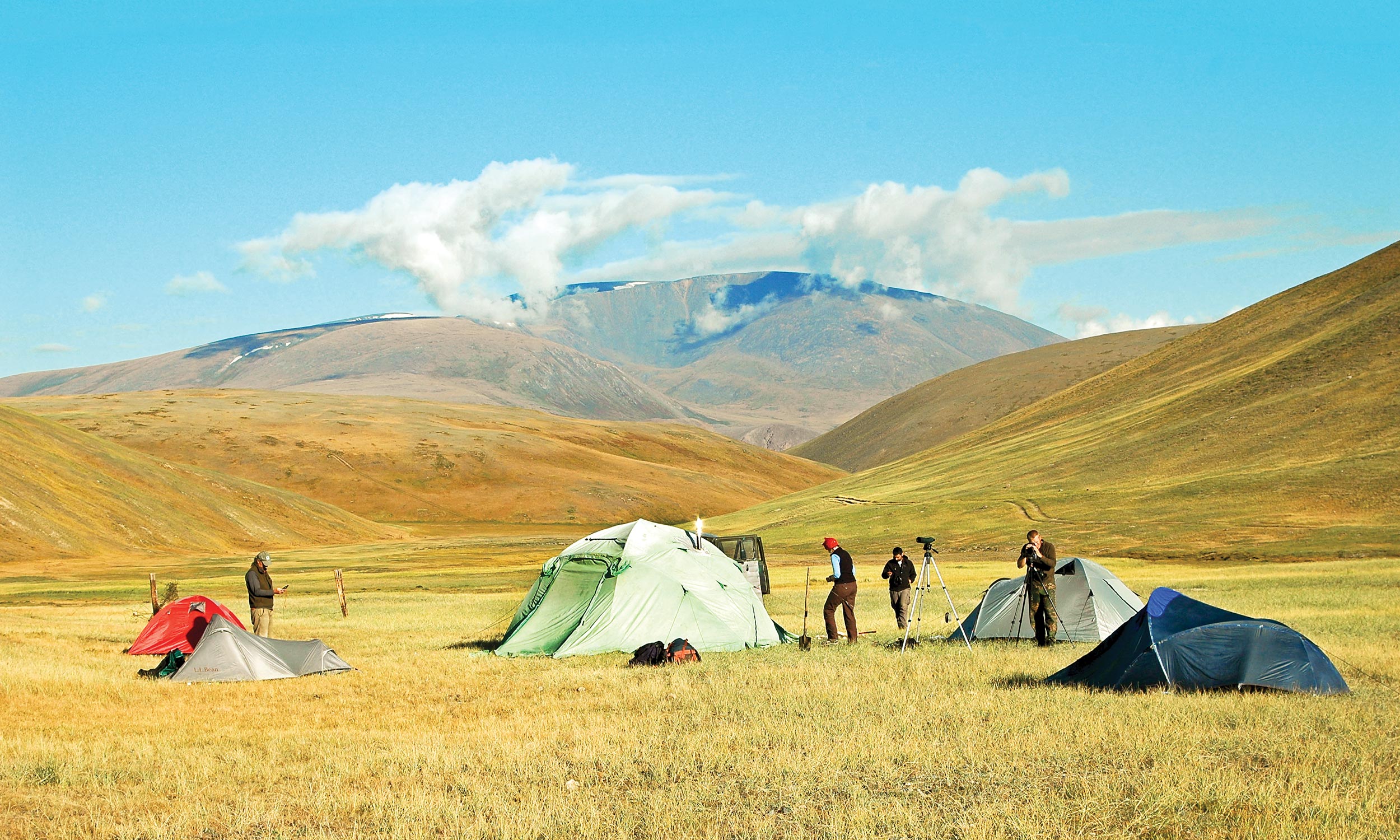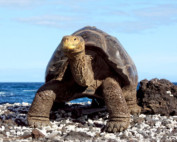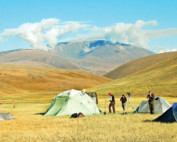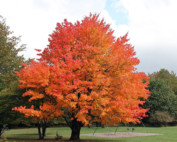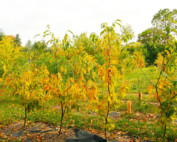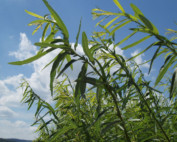J ust 10 years ago, Dr. James P. Gibbs was pessimistic about the likelihood that the global conservation community could make a difference for Russia’s dwindling population of snow leopards, cats so elusive a biologist who spends a career studying them might never see one in the wild.
But after several expeditions to a remote section of southern Siberia in collaboration with partners in Russia, Canada and the United States, Gibbs has a less gloomy perspective on attempts to protect the endangered species.
“Even a decade ago, I’d have said conservation of snow leopards was a hopeless task,” said Gibbs, a conservation biologist at ESF. “Now I can say, ‘If we want things like snow leopards to turn around, we can turn them around.’ But all the pieces have to be in place.” The pieces present a challenging puzzle. The international partnership is focused on the Altai Republic, a sparsely populated mountainous area in Siberia, just north of where China’s northwest corner juts in a triangle between Kazakhstan to the west and Mongolia to the east. Arid and rugged, Altai is about the size of Indiana but populated by only about 200,000 people. It is marked by temperatures that plunge to 40 degrees below zero and treacherous rivers fueled by melting glaciers.
“Most of Altai is quite remote; just imagine the state of Montana 100 years ago,” Gibbs said. ESF provides technical and scientific expertise within a partnership that includes snow leopard specialist Sergei Spitsyn, director of conservation with the Altaisky State Biosphere reserve; Mikhail Paltsyn, who works in Russia with the World Wildlife Fund; and Jennifer Castner, director of The Altai Project, a conservation organization working to protect the region’s resources, who oversees logistical aspects of a project that is complicated both politically and culturally.
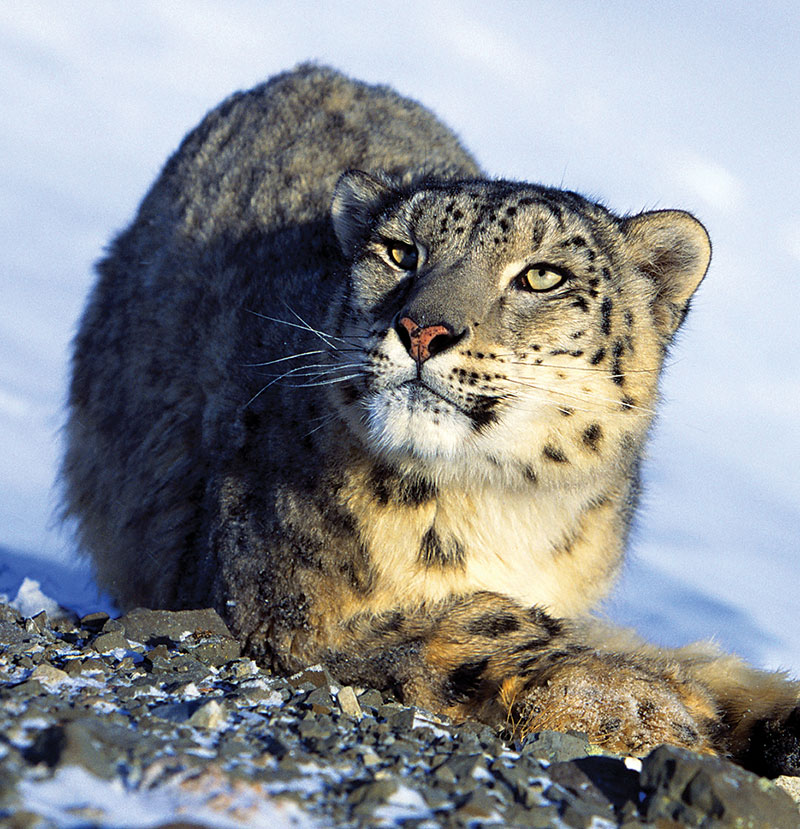
Castner said the Altai-Sayan Ecoregion, of which Altai Republic is a part, is “a globally important ecological hotspot.” The partners work in part of the UNESCO World Heritage Site known as the Golden Mountains of Altai.
“Altai is a pearl in the necklace of world conservation areas,” Castner said. “Verdant forests and valleys, many, many wild and undammed rivers, open steppe, tundra, and tundra-steppe plains are all critical habitat for wildlife and humans. The semi-nomadic Altaian indigenous people have a rich history of animal husbandry, hunting, and other traditional lifeways, and much of their culture is still intact. The landscape is also liberally sprinkled with prehistoric, Stone and Bronze Age archeological sites, petroglyphs and sites even now held sacred by the local indigenous peoples.”
Castner, who has traveled extensively through Siberia and the Russian Far East, said: “Altai is where my heart sings. The landscape and wildlife is stunningly rich and varied, many local people are committed to living in harmony with the land, and the culture is fascinating and steeped in history.”
The partnership’s work extends beyond snow leopard conservation to include endangered Argali sheep, the world’s largest wild sheep.
Snow leopards are considered endangered across Central Asia, and less than 100 are believed to remain in Russia. Their distinctive spotted fur makes them the target of poachers during the winter, when their coats are most luxurious.
Argali sheep are faring only slightly better. Scientists believe no more than 350 of them remain in the wild in Russia. They are threatened by poachers because their long, twisting horns are valued by trophy collectors.
Poaching is the biggest threat to both species.
“These are not the typical problems that are causing animals to disappear,” Gibbs said. “There’s no habitat loss, no urbanization, no contamination. It’s all about
indiscriminate killing of these animals. If we can stop it, they can come back.”
Gibbs first explored parts of the Argut River Basin, where Russia’s largest snow leopard population was thought to live, in 2009. Follow-up surveys in the area throughout the fall and winter of 2010, using motion-activated cameras installed on rocky, remote trails, recorded photos of other wildlife including ibexes, the leopards’ preferred prey, but there were no photos of snow leopards.
In July 2011, Gibbs traveled back to the Altaisky area to test anti-poaching devices that had been developed for him by a company in British Columbia. The following month, he was joined by another faculty member in ESF’s Department of Environmental and Forest Biology, Dr. Jacqueline Frair, and graduate students Jim Arrigoni, Meredith Atwood and Elizabeth Hunter to survey the population of Argali sheep and look for signs of snow leopards. That expedition turned up enough evidence of snow leopards that the cameras were reinstalled at a particularly promising site near the Altaisky reserve, where photos of the cats were obtained late last year.
Arrigoni, a doctoral student in conservation biology, remembers the moment during that expedition when he spotted his first Argali sheep.
“It was pretty thrilling,” he said. “It was up on a high slope and there was a valley down below. I’d spent two days without seeing anything and I was thinking, ‘Where are they?’ And suddenly, there they were in a valley.”
Arrigoni had spotted two males grazing together, typical behavior for the summer, when the females remain in a unit with the yearlings and new lambs, and the males travel alone or in small groups. His discovery came a few days into a monthlong trip in which the group, accompanied by Spitsyn and a few other colleagues, traveled through the mountains in a van, stopping each day to hike in a cloverleaf pattern and scour the scenery for sheep and other wildlife.
Gibbs plans to return to the Argut River Basin this summer to work on the installation of high-tech anti-poaching instruments. After the cameras were moved back to Argut early this spring they captured images of snow leopards in a nearby valley. This fuels hope, given the large populations of ibexes present in the Argut valley, that the snow leopards are “on the door step,” as Gibbs puts it, and could recolonize quickly if poaching is controlled.
So far, the Altai work has been funded by about $80,000 in grants from Panthera, a conservation organization focused on wild cats; the Weeden Foundation, whose mission is to protect biodiversity; and the U.S. Fish and Wildlife Service.
Gibbs and two Canadian colleagues were recently awarded $20,000 from the Weeden Foundation to support anti-poaching efforts.
The first component of the project will be the installation of electronic technology to detect the presence of poachers who use remote cabins in the Argut River valley. Gibbs and his colleagues plan to collaborate with Spitsyn and his anti-poaching patrols to install a covert, field-based sensor system. The high-tech devices, hidden in cabins used by poachers, detect changes in temperatures. When poachers light fires during frigid Siberian winters, the devices send a satellite signal that reaches rangers’ headquarters in near real time. Rangers at headquarters then coordinate with field patrols via satellite phone.
“The technology enables a dramatic increase in effectiveness of park guards relative to the current approach of haphazard searches over vast areas,” the researchers wrote in the grant application. The devices were developed with support of the Weeden Foundation which previously supported Gibbs and his team as they evaluated and installed anti-poaching devices in the Altai region in 2011.
The Weeden grant will also fund the researchers in providing technical assistance in planning anti-poaching campaigns in Shavlinsky Zakaznik/Argut Nature Park. The anti-poaching campaigns would build on a snare-removal project funded by the U.S. Fish and Wildlife Service and a previous Panthera camera-trap installation project. Many kilograms of snares have now been removed and the presence of poachers has dropped substantially. Data collected previously will be used to build models of where certain wildlife species occur, where poachers are most likely to be active and where patrol efforts would be most effective. ESF is also a partner in a grant proposal that seeks about $25,000 from the U.S. Fish and Wildlife Service in a project led by Castner. That effort has provided for an anti-poaching team from Altai Republic’s Game Management Committee, the non-governmental conservation organization Arkhar, of which Spitsyn is executive director, and local residents to regularly visit remote snow leopard habitats, search for and remove snares that capture musk deer and other species in addition to snow leopards, and detain and fine poachers. The team works with local communities to develop economic alternatives to poaching and uses societal pressure to stop the practice. The anti-poaching team is led by Spitsyn.
“The fate of Russia’s remaining snow leopards depends on immediate action through this collaborative effort to clear the Argut area of snares and find alternative livelihoods for poachers,” the grant application states.
Gibbs approaches the work patiently.
“You have to have the survey data; if you don’t know where these animals are, you can’t protect them.
Then you have to deal with the immediate threat. In this case it’s removing snares and doing anti-poaching work. Then you have to come up with long-term solutions, including working with the local people to develop education and alternative livelihoods. All the anti-poaching devices in the world aren’t going to work if people are dirt poor.” The larger project as overseen by Paltsyn just secured a major grant from Citi Foundation to provide micro-loans for local people to develop small enterprises as an alternative to poaching.
“We just take it one year at a time,” Gibbs said.
“There is evidence that shows snow leopards are on the doorstep of the Argut River Valley and there is plenty of prey for them. They will come back if people leave them alone.”
Castner said Gibbs “brings a creative and thoughtful approach to balancing science and hands-on conservation.”
ESF Science Matters
Before There Was Earth Day — There Was ESF
For more than 100 years, the SUNY College of Environmental Science and Forestry has done research on some of the planet’s most vexing challenges — and helped find solutions that benefit the global environment. Among our success stories are work that has put the magnificent American chestnut tree on the cusp of returning to our forests and increased the chance that iconic wildlife species will have a shot at survival. One of our most esteemed alumni helped save the lives of millions children with a pneumonia vaccine. Our scientists have researched the effects of acid rain in New York’s majestic Adirondack Park and are advancing renewable resources to produce energy and materials for consumer products.
Support of independent, objective scientific research is essential to improve our world. Join our journey of discovery.


